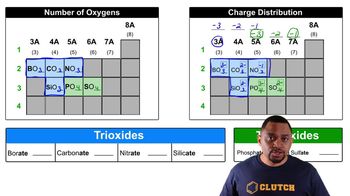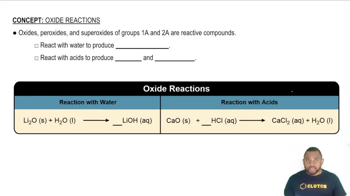Here are the essential concepts you must grasp in order to answer the question correctly.
Silicate Ceramics
Silicate ceramics are materials primarily composed of silicon and oxygen, often combined with various metal oxides. They are characterized by their high melting points, chemical stability, and mechanical strength. Common examples include feldspar and kaolinite, which are used in pottery and glass production. Understanding the composition of silicate ceramics is essential for classifying materials based on their chemical structure.
Recommended video:
Polyatomic Oxyanion Names
Oxide Ceramics
Oxide ceramics are inorganic compounds that consist mainly of metal oxides, such as alumina (Al2O3) and zirconia (ZrO2). These materials are known for their excellent thermal stability, electrical insulation properties, and resistance to corrosion. Oxide ceramics are widely used in applications ranging from electrical insulators to dental materials. Recognizing the characteristics of oxide ceramics is crucial for proper classification in the context of the question.
Recommended video:
Nonoxide Ceramics
Nonoxide ceramics are a diverse group of materials that do not contain oxygen in their primary structure, often including carbides, nitrides, and borides. Examples include titanium diboride (TiB2) and silicon carbide (SiC), which are known for their hardness and thermal conductivity. These materials are typically used in high-performance applications such as cutting tools and armor. Understanding the classification of nonoxide ceramics is important for accurately categorizing the materials in the question.
 Verified step by step guidance
Verified step by step guidance

